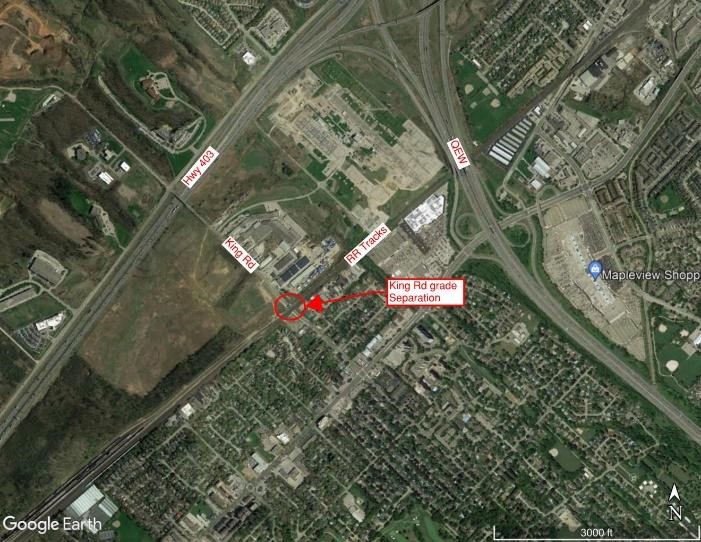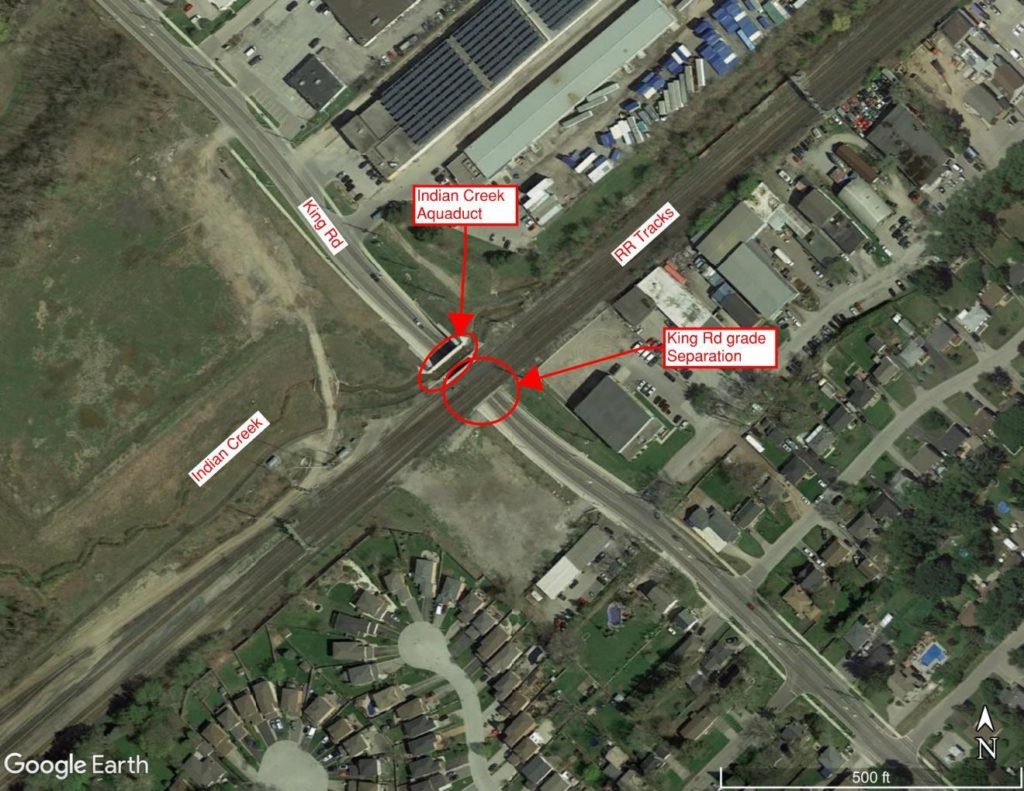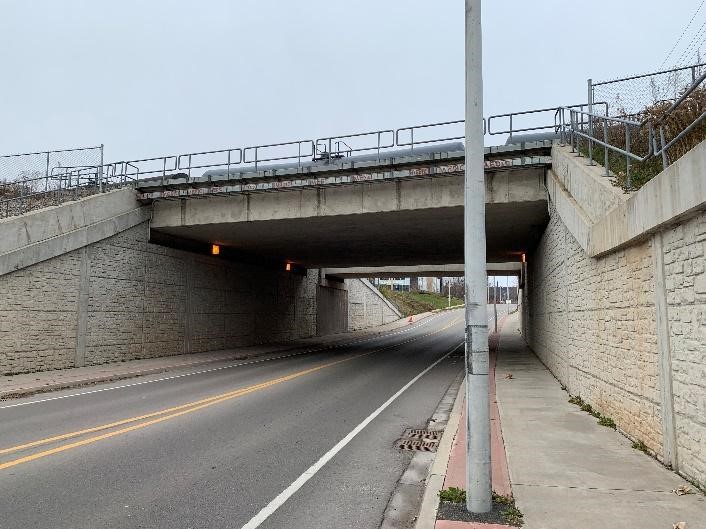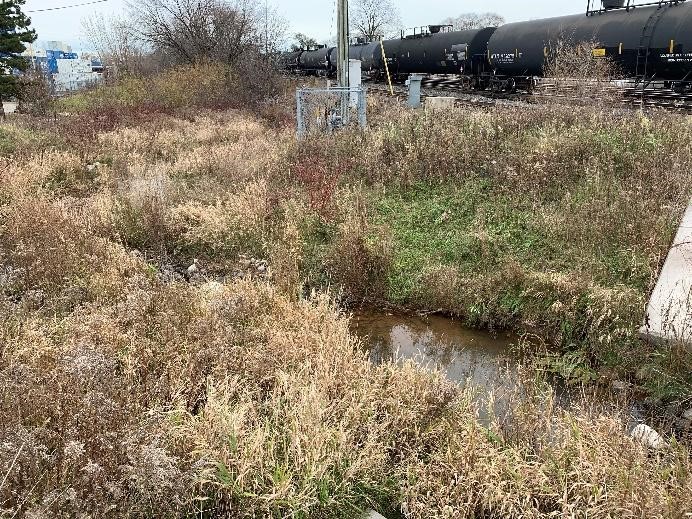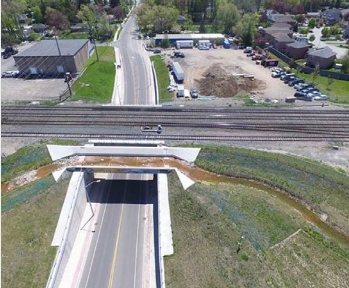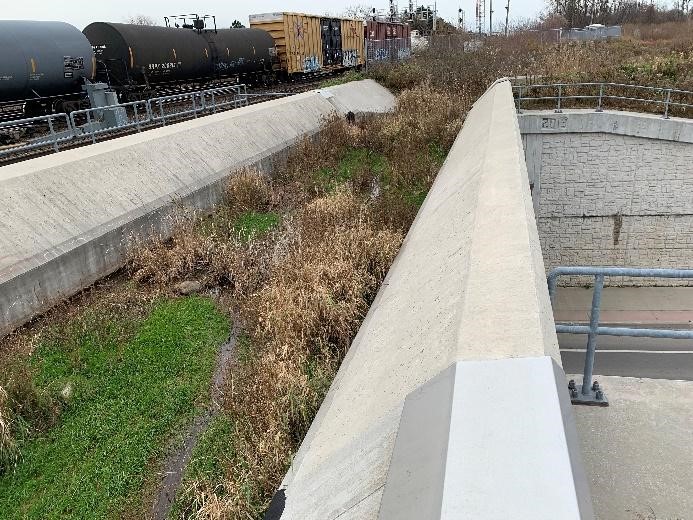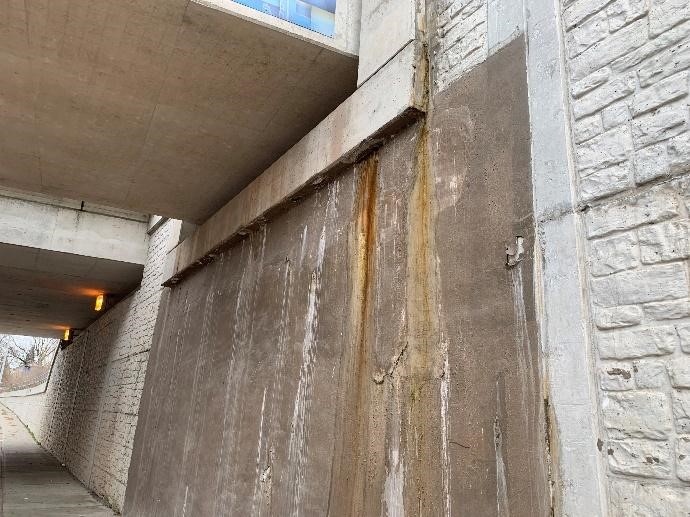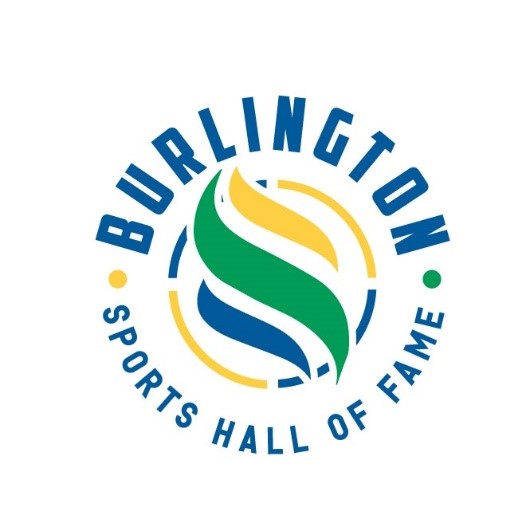The Burlington area has dozens of road bridges crossing over creeks, but only one creek bridge crossing over a road. In fact, bridges carrying creeks over roads are incredibly rare. Welcome to the King Road Indian Creek Bridge.
Built in 2013, this fascinating little bridge is located over King Road, south of Highway 403, and next to the CN railroad tracks (see Figure 1). It is apparently the first operating creek bridge (aqueduct) to be built in Canada for over a century!
It was built when the City of Burlington (in collaboration with CN Rail) decided to build a grade separation between King Road and the railroad tracks using accelerated construction methods (definitely a subject for a future article). A grade separation is when either the railroad or the roadway is put up on a bridge and the other is routed underneath — as opposed to a grade crossing. Railroad tracks have to stay as flat and level as possible; therefore, the roadway is usually raised over the tracks or excavated underneath, as was the case here (see Figure 2). Today, Burlington has only one remaining major railroad grade crossing (at Mainway east of Guelph Line).
When King Road was lowered under the tracks, Indian Creek lost its creek bed. There were only two options for managing the creek through this area: either reroute it away from the tracks through private property or build a bridge for it over King Road next to the railroad bridge.
Tampering with creeks has become challenging over the years with the increased environmental stewardship municipalities are taking towards maintaining the natural environment. There has been a shift in approach to leaving things where they are and modifying the built environment accordingly (see Figure 3).
Rerouting the creek to go around the new grade separation would have required buying a lot of private property for a new alignment, proving to be cost prohibitive and environmentally risky, so an aqueduct was designed to carry the creek in its original location (see Figure 4).
The aqueduct is a U-shaped post-tensioned channel, meaning that steel cables were pulled through conduits in the concrete along the length of the bridge and tensioned in a way that increases its strength. It is 4.5 metres wide and about 2 metres deep and can convey 17 m3 of water per second, which is the anticipated volume during a regional storm event (a very high-volume rain event). The bridge was also designed to continue the naturalized creek bed, allowing for aquatic growth on the bridge (see Figure 5).
The ground beneath a creek has some natural residual warmth that keeps the creek from freezing over (at least until temperatures get crazy cold). Bridge surfaces have a tendency of freezing over in the winter because they lack that ground contact (hence the warning signs at most bridges). To reduce this risk of ice buildup, the Indian Creek aqueduct has insulation just beneath the creek bed along the bridge deck, reducing the risk of freezing during the winter.
Managing the passage of water through structures is not easy. Creeks are a sign of where the water table is. And building roads below the water table poses big challenges. As the water permeated through the ground under the creek over time, it started to leak through the retaining walls at both abutments. This required post-construction repairs, which involved sandblasting, cleaning, and shotcreting (pneumatically applied concrete) to stop the leaks. The result is not that pretty but appears to have sealed the leaks (see Figure 6).
Infrastructure is often a good opportunity to showcase selected local artwork (before the graffiti artists get to it). The large mural on the north side of the bridge was designed by Judy Mayer-Grieve, a well-known local Burlington artist (see Figure 7) and inspired by the natural history of the escarpment.
Even looking up while driving by, you’d never know how rare this bridge is. Our very own aqueduct carrying Indian Creek overhead over King Road is a gem worth noticing.
Have you seen an interesting building or piece of infrastructure in or around Burlington that you’d like Eric Chiasson, your personal engineer, to write about?
Send us your suggestions, comments, or questions to articles@local-news.ca and we’ll see what Eric can find out!
Sources:
Canadian Consulting Engineer. King Road/CN Grade Separation. Url: https://www.canadianconsultingengineer.com/awards/pdfs/2014/B14_KingRoadCNGrade.pdf (accessed Dec. 10, 2021).
Hatch. King Road at CN Grade Separation. Url: https://www.hatch.com/Projects/Infrastructure/King-Road-at-CN-Rail-Grade-Separation (accessed Dec. 10, 2021).
Kelso Coatings. King Road Underpass. Url: https://kelsocoatings.com/projects/king-rd-underpass/ (accessed Dec. 10, 2021).
TAC Technical Excellence Award – 2014, King Road/CN Grade Separation. Submitted by Hatch Mott MacDonald and Amec, March 18, 2014.
For more information on the author: https://www.linkedin.com/in/eric-chiasson-10601082


